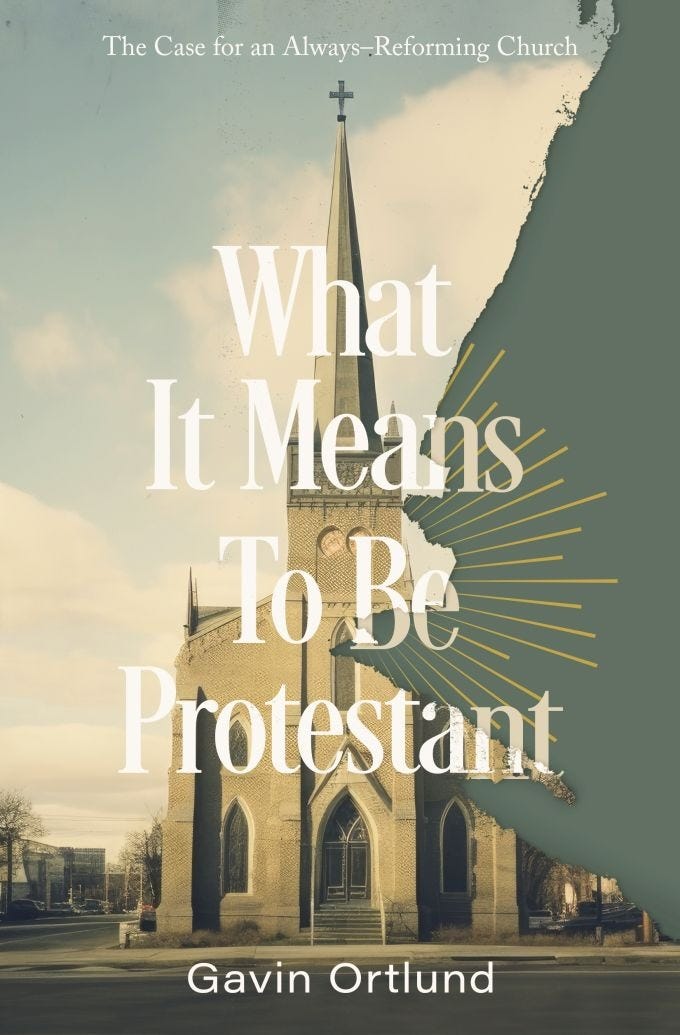Review: Gavin Ortlund's What It Means to Be Protestant
As part of Zondervan's Reflective series, Ortlund hits his mark, and evangelicals should read this book
In What It Means to Be Protestant, Gavin Ortlund argues that Protestantism renews the ancient church rather than breaks from its past (219), and he sees Protestantism as a return to the authority of scripture and a removal of historical accretions (219–20).
Strengths
Commendably, Ortlund argues his case by a close reading of primary sources from church history. While he uses secondary sources, his reading of first-hand writers partially proves the book's argument, as it illustrates how Protestantism seeks to renew the church through retrieval.
As he shows from authors like John Jewel, Martin Luther, and others, the reformers and the Reformation in general aimed to stand against certain Roman impositions upon the church. For example, Ortlund shows how exploitative selling indulgences was seen to be during the Reformation Era.
Another example that Ortlund points out is the widespread persecution of religious dissidents before the Reformation. He particularly points to how mistreated Jan Hus was. Yet Hus stood among many who suffered for their belief because, as Rome saw it, worldly might backed church power.
These two matters (indulgences and persecution) set up his chapter on the Protestant emphasis on sola fide. The rhetorical effect is to show why the Reformation connected with so many in the 16th century.
Other commendable aspects of the work include how Ortlund avoids wrong claims about Roman Catholicism, like the oft-said but untrue claim that Protestants and Catholics split on "salvation by works" versus "salvation by grace." Many Protestant teachers make this mistake. At the same time, where the two differ truly (on the Lord's Supper, assurance in being saved, how grace works, etc.), Ortlund points out with refreshing conviction.
Particularly, Ortlund rightly criticizes the novelty and accretions of Roman Doctrine in his chapters on Mary's Assumption and bowing to icons. These chapters back up his claim that Protestantism, as Calvin said, brings the church back to a more ancient form of faith.
His arguments regarding Protestant "catholicity" also make an important contribution. Since Protestants believe we're justified by grace through faith and that churches exist where Word and sacraments are rightly administered, they can admit that Christians exist where true faith does. If someone trusts in Jesus Christ for salvation, they may be saved!
By contrast, Roman Catholic and Eastern Orthodox thinkers often claim that no one can be saved outside their institutions, which makes them less "catholic" than Protestants.
Shortcomings
While Philip Schaff's view that the reformers renewed the Catholic church holds merit, the Mercersburg thinking from Schaff and Nevin raises questions for me. Schaff is brilliant but also has a Hegelian view of history that colours his arguments. While I agree with Ortlund's conclusion from Schaff, I wish he had pointed to other sources for his theological argument about Protestantism to show the breadth of this position.
Ortlund's thoughts (pp. 62-63) on Protestant belief in imputed righteousness versus the Roman view of infused righteousness miss some truth. Protestants also spoke of infusion alongside imputation. They even spoke of habitual righteousness. Ortlund didn't note this, which may simply be a genre restriction since he is writing for Zondervan's reflective series, not writing an academic monograph.
Though his main point stands, I wish Ortlund had at least nodded to the important judgments being made about the two kinds of righteousness, which we now call justification and sanctification rather than just naming them as a key difference between Rome and Protestants.
Final Thoughts
As part of Zondervan's Reflective series, Ortlund hits his mark, and evangelicals should read this book. Experts or Reformed scholars might find parts too simple, but most evangelicals need to be reminded of the Protestant faith.
After reading Ortlund's work, readers might gain from books by Oberman, Gordon, Steinmetz, or others who spell out the faith more fully. In a 250-page book, Ortlund had to stick to key points, sometimes making Reformed thinking simpler—a fitting choice for his aims.
Despite my criticisms, I still commend this work. But I would only note that one should begin to read the primary sources afterwards to get a fuller picture of how Christ has built his church for 2,000 years.




Thanks for the review, Wyatt. I have a lot of respect for Gavin Ortlund (the Ortlund clan in general, really) and this one has been on my to-read list since it came out. Hoping to get to it this summer when the calendar slows down a bit.
I liked his summary of iconoclasm and idolatry. Do you have any recommended resources there?